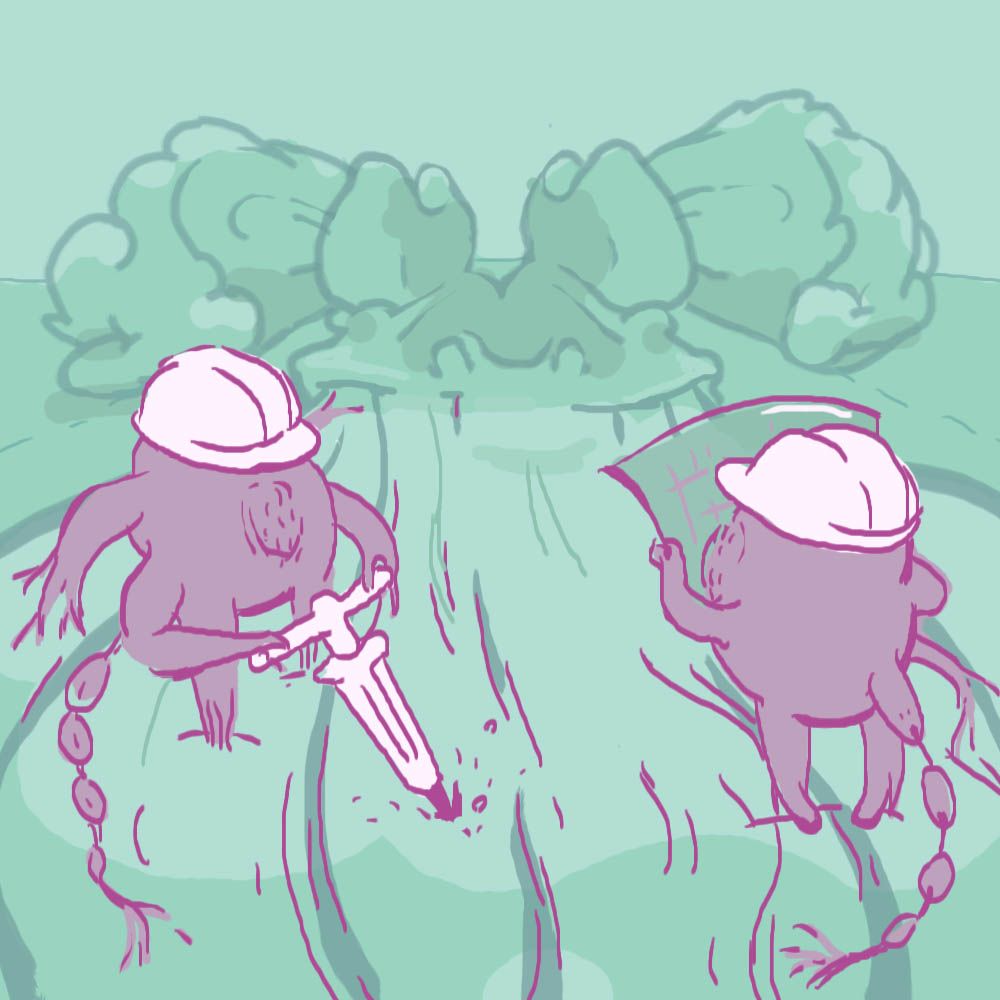How to Make a Midbrain:
Today at sfn , I attended a symposium on the mechanisms guiding physiological changes in the midbrain. The midbrain begins developing very early due to the action of the neural tube – a precursor nervous system structure that releases many chemical signals which set up the environment necessary for central nervous system development. The rest of this post focuses on how the midbrain neural tube is formed by introducing the concept of signalling gradients as regulators of cellular activity.
Before neural tube development, the area of the midbrain, where it forms, is sheet like. During early embryonic development, the midbrain is on the very back side of the embryo, so in this shape, delicate brain tissue is exposed. As neural tube formation occurs, this area becomes protected.
Step One: Where Am I?
One important activity of signalling molecules is to give cells an idea of where they are within the body. The signals present, as well as their concentration within an area, will tell the cell which things it needs to start making in order to perform its proper function.
Step Two: Begin Construction
When the neural tube is forming in the midbrain, specific signals are necessary to instruct cells where they should be bunching up and how rigid they should be so the proper shape can be made. The distribution of these signals regulates the way the actual brain tissue changes shape to form the neural tube. This is largely mediated by concentration gradients of the signals within a certain area as well, allowing cells that are near each other to receive different instructions.
In the midbrain this process is controlled by two signalling pathways, which act in concert. One is the BMP signalling family, and the other is TGFBeta. These two signals interact with a class of proteins known as SMADs, which can either send the signal further down the line to the cell’s nucleus, altering cellular protein production and further fate determination, or interact with a membrane protein in the PAR family. This cytoplasmic interaction is a relatively new concept, since SMADs are usually considered transcription factors (which act within the nucleus).
Step Three: Await Further Instructions
Now that these cells have received their signals and begun to carry out the processes that will lead to neural tube formation, they must be ready to switch the way they function to further develop the midbrain. This is why more than one signal is used to regulate midbrain neural tube formation; TGFBeta signals help to define the shape by instructing proteins to interact in a way that makes areas more rigid and bunched, whereas BMP tells proteins to group together in a way that flattens the area receiving its signals.
So there you have it – the basic recipe for a midbrain neural tube. Come back soon for more information hot off the press from sunny San Diego.
